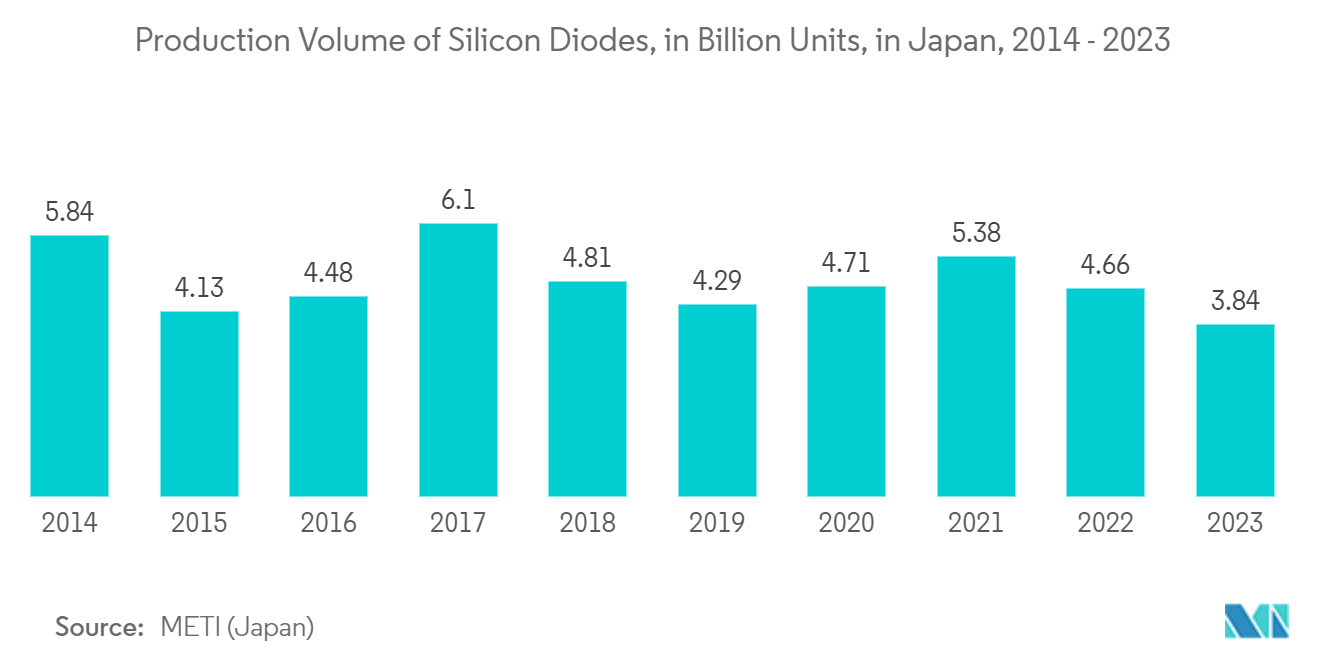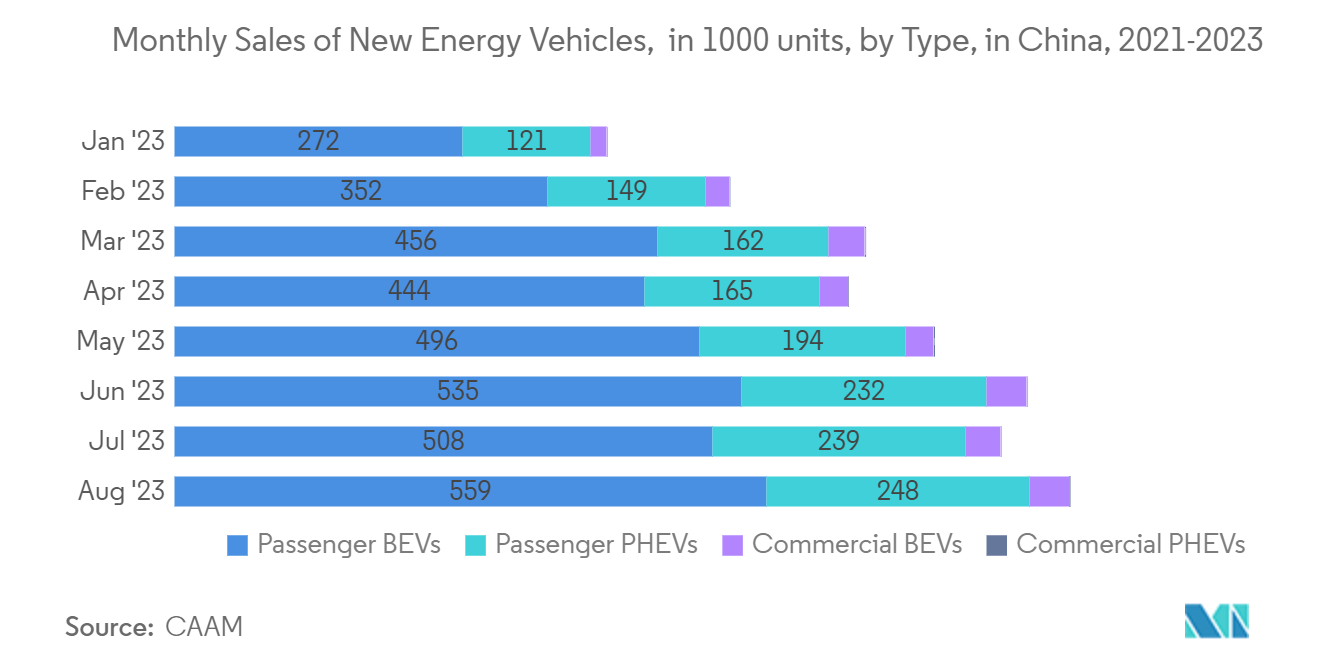Market Trends of Asia-Pacific Semiconductor Diode Industry
Small Signal Diodes are Expected to Hold a Significant Share
- The small signal diodes have a high switching speed with a fast recovery time. Hence, many electronic systems use small signal diodes, which are AC (continuously changing) signals or pulses with amplitudes of a few volts, millivolts, or even microvolts. Therefore, with the growing demand for consumer electronics, the market studied is expected to grow during the forecast period.
- The stringent government rules and regulations regarding vehicle emissions are anticipated to drive the market for small signal diodes in the Asia-Pacific region. For instance, in order to boost the manufacturing of BEVs and PHEVs and have 1.2 million of these vehicles on the road by 2036, the Thai government introduced an EV action plan in 2016. As a result, 13 businesses gained favorable tax treatment for electric automobiles. In order to develop an ASEAN EV hub and generate 250,000 EVs by 2025, Thailand published an EV strategy in March 2020. This roadmap is anticipated to spur market expansion.
- The rapid deployment of 5G networks, coupled with the increasing use of Internet of Things (IoT) applications for devices, such as assisted driving and vehicle-to-everything (V2X) communication for smart transport, is expected to increase the demand for small signal diodes.
- In addition, in June 2022, Toshiba Electronics expanded its partnership with Farnell, a global distributor of electrical parts sold in Asia-Pacific, under the name element14. As a result of this collaboration, Farnell was to stock more and more Toshiba products, improving support for Toshiba's client supply chain. By 2023, Farnell's portfolio was to include a total of 1,000 Toshiba products. Toshiba's small signal diodes and transistors will be highlighted.
- The Japanese government aims to ensure that all new cars sold in Japan be electric or hybrid vehicles by 2050. According to JEITA, in 2023 about 3.84 billion units of silicon diodes were produced in the country. The country plans to subsidize the private sector to accelerate the development of batteries and motors for electricity-powered vehicles. Japan witnessed an increase in EV charging stations to support the rising number of EVs because of the introduction of government subsidies for EV buyers. This is expected to drive the demand for small signal diodes in the automotive industry.

China is Expected to Hold a Significant Share
- The Chinese semiconductor diode market is expected to hold a significant share owing to rising awareness and stringent government rules and regulations regarding vehicle emissions. The adoption of electric vehicles helps reduce emissions. Moreover, the Chinese electric light commercial vehicles segment is expected to grow fastest. For instance, in 2021, the total sales of electric vehicles in China reached 5.9 million units. The Chinese government targets 20% of all vehicle sales to be electric by 2025, including the adoption of NEVs as the next generation of government vehicles.
- Many large electric vehicle manufacturers are investing in the establishment of plants in the country to manufacture electric automobiles. For example, Tesla constructed a second electric vehicle (EV) facility in China in February 2022 to assist it in meeting rising demand both locally and in export markets. In China, the business raised manufacturing capacity to at least 1 million cars per year.
- The increasing demand for consumer electronics across China pushes numerous corporations to create manufacturing facilities. For instance, according to the most recent figures from the Chinese government, Chinese subscribers are flocking to buy new and expensive 5G cell phones. China's 5G phone shipments surpassed 266 million units in 2021, an increase of 63.5% over the previous year. 5G accounted for 75.9% of the total mobile phone shipments, according to the data from the China Academy of Information and Communications Technology (CAICT).
- Vehicles utilize diodes because they allow current flow in only one direction. This critical component protects the vehicle's LED headlamp against current spikes. Hence, the growing demand for smart lighting solutions in China, owing to their energy efficiency, convenience, and cost-saving benefits, is expected to drive the market studied. For instance, in February 2023, a large-scale smart infrastructure project was initiated in Huanggang City, China, to save energy costs and emissions while digitalizing urban infrastructure. As part of the project, Signify would provide the city in Hubei Province with light-emitting diode (LED) street lighting, smart poles, and a connected lighting system for industrial parks.
- According to CAAM, in August 2023, China sold a total of 846,000 new energy vehicles. Of these, 808,000 were passenger electric vehicles, with the remaining 39,000 categorized as commercial electric vehicles. Specifically, sales figures for passenger battery electric vehicles (BEVs) stood at 559,000 units, while passenger plug-in hybrid electric vehicles (PHEVs) saw sales of 248,000 units.


